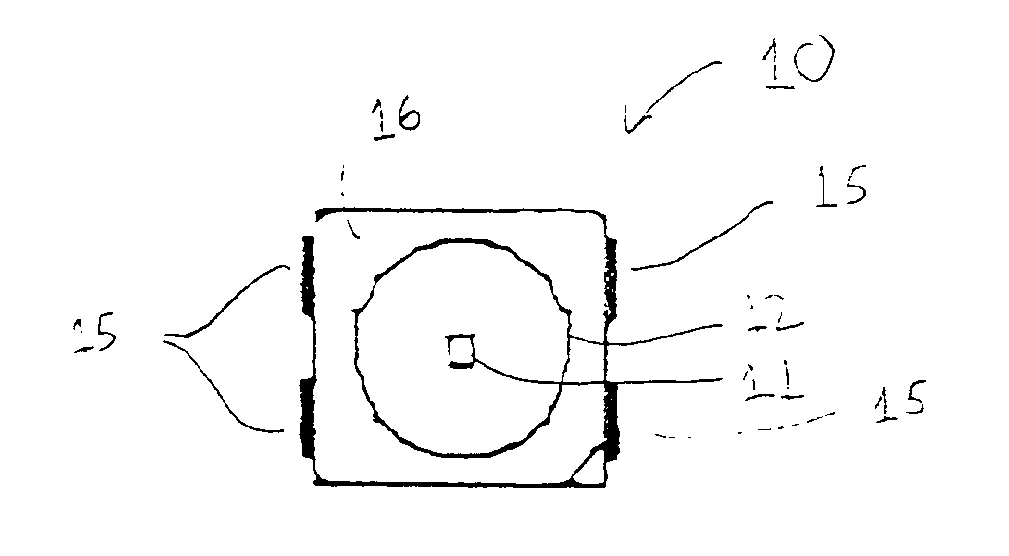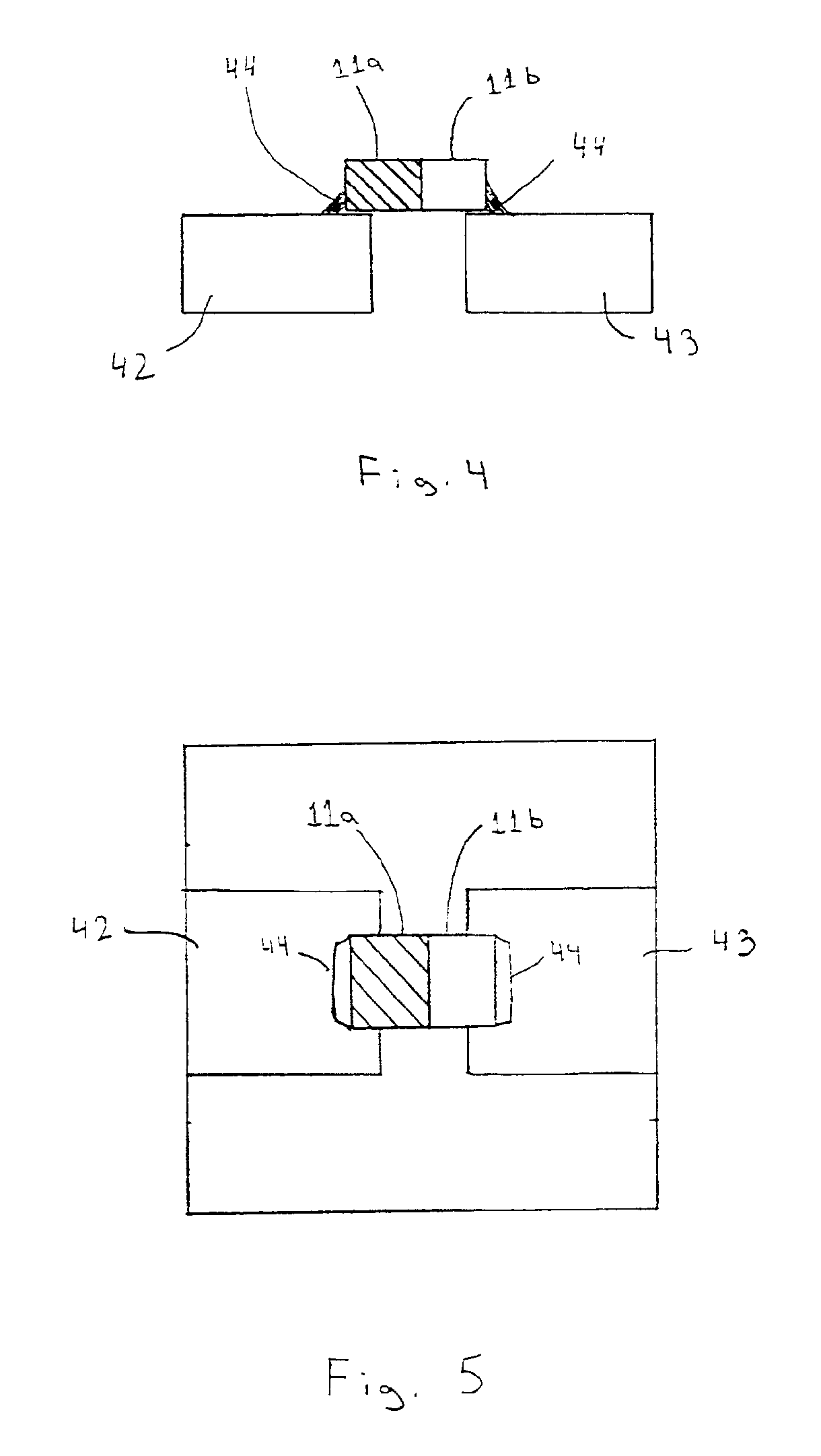Semiconductor light emitting device
a technology of semiconductors and light emitting devices, which is applied in the direction of point-like light sources, lighting and heating apparatus, instruments, etc., can solve the problems of reduced efficiency of led, limited use of light emitting diodes (leds) that are currently used, and increased heat generation of leds
- Summary
- Abstract
- Description
- Claims
- Application Information
AI Technical Summary
Benefits of technology
Problems solved by technology
Method used
Image
Examples
Embodiment Construction
[0019]While the foregoing description includes many details and specifics, it is to be understood that these have been included for purposes of explanation only, and are not to be interpreted as limitations of the present invention. Many modifications to the embodiments described can be made without departing from the spirit and scope of the invention, as is intended to be encompassed by the following claims and their legal equivalents.
[0020]The LED of the present invention includes a unique combination of features that enable the LED to produce a high-brightness predetermined radiation pattern. The combination of features enable the LED to function reliably at a higher drive current at a given ambient temperature, and therefore emit light of increased brightness, and to have a particular, e.g., symmetrical, radiation pattern.
[0021]An LED according to one embodiment of the present invention will now be explained in conjunction with FIGS. 1-9. FIGS. 1 and 2 depict top and cross-secti...
PUM
 Login to View More
Login to View More Abstract
Description
Claims
Application Information
 Login to View More
Login to View More - R&D
- Intellectual Property
- Life Sciences
- Materials
- Tech Scout
- Unparalleled Data Quality
- Higher Quality Content
- 60% Fewer Hallucinations
Browse by: Latest US Patents, China's latest patents, Technical Efficacy Thesaurus, Application Domain, Technology Topic, Popular Technical Reports.
© 2025 PatSnap. All rights reserved.Legal|Privacy policy|Modern Slavery Act Transparency Statement|Sitemap|About US| Contact US: help@patsnap.com



